This image is often shared as “the giant stairs for the Nephilim.” In this context, “Nephilim” refers to a race of giants that lived on Earth according to Genesis 6:1-4. Could it be that these ancient giants used these giant stairs?
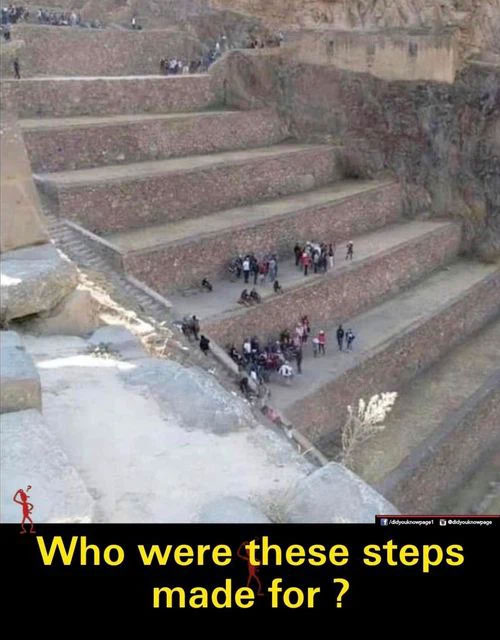
Giant stairs for the Nephilim?
However, in reality, this is a photo of Ollantaytambo, an Inca ruin – a town and archaeological site in southern Peru, located 72 km northwest of the city of Cusco. It sits at an elevation of 2,792 meters above sea level in the Ollantaytambo district, Urubamba province, Cusco region.
These are not stairs for giants, but agricultural terraces. They are commonly used for farming on mountainous terrain. Therefore, this image provides no evidence of ancient giants.
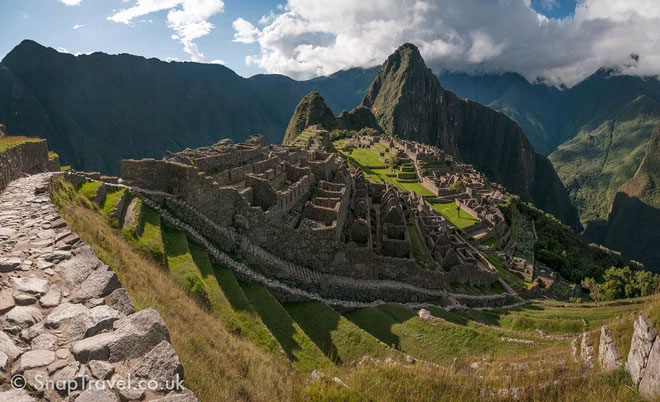
Regarding the Nephilim and the race believed to be ancient giants: they are mentioned in the Bible. There are various interpretations: they could be fallen angels, extraterrestrials, giants, or hybrids between humans and angels.
The Inca culture is one of the most significant civilizations in South America and has left a tangible legacy of pre-Columbian civilizations across the territories now known as Ecuador, Peru, Bolivia, Chile, and Argentina.
These structures are extensive terraces built on mountainsides that allowed the Incas to maintain land for agriculture adapted to the high-altitude environment – similar to terraces found in other mountainous countries, but with some differences in construction.
This terrace system serves three main functions:
- Erosion Control: These structures prevented erosion and landslides while constructing cities, housing, and temples.
- Agriculture: By building these platforms, the Incas expanded the area of land used for agricultural activities. These terraces allowed the use of rainwater as an irrigation source directly from channels connecting each level. Today, crops are no longer cultivated to maintain their integrity.
- Ceremonial Centers: These terraces were built more beautifully and wider than terraces found elsewhere, serving both decorative purposes for administrative centers and as venues for various rituals.
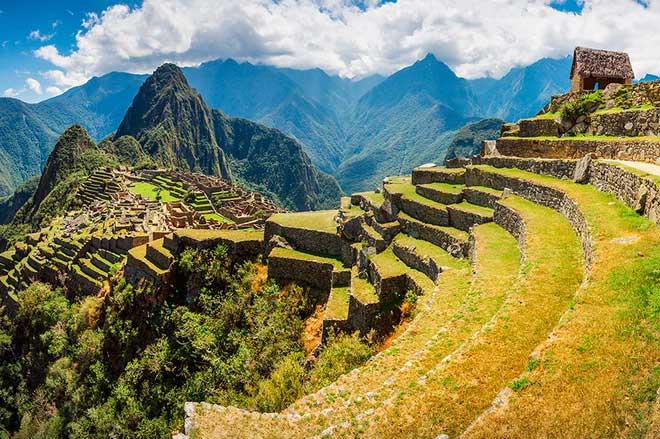
These terraces have existed for hundreds of years. This site was once a stronghold of the Inca Empire that thrived from the 15th to the 16th century.
The internal drainage system of the terraces consists of three layers:
- The first layer is the cover.
- The second layer is sand.
- The third layer is gravel.
These layers allow water to be absorbed by the terraces and flow downhill through the levels, quickly being absorbed without causing landslides that could endanger the city and its inhabitants.
Through a system of 130 pipes and drainage sources, the Incas were able to channel water from the canal, allowing them to supply water to a large part of the city.
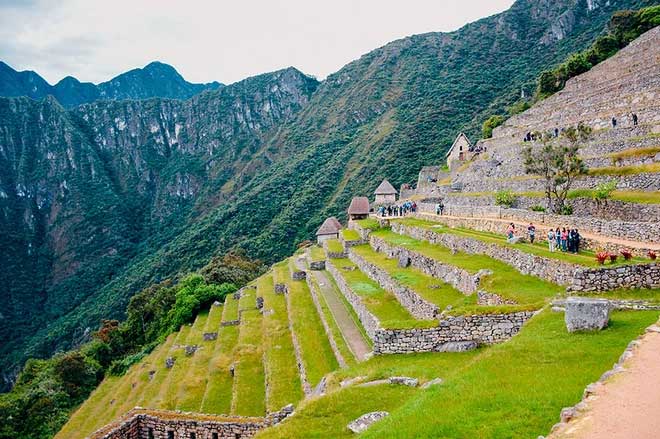
Engineers had to devise a way to prevent water from accumulating on top and causing landslides when flowing downhill.
Engineer and paleontologist Kenneth Wright spent 15 years studying the Inca drainage system. According to his research, 60% of the water available to the Incas came from regional rainfall – up to 2,000 mm annually. This implies that engineers had to find a way to prevent water from accumulating on top and causing landslides when flowing downhill.
In addition to the mentioned drains and sources, the Inca ruins were built on a layer of granite that allowed rainwater to flow to the terraces.
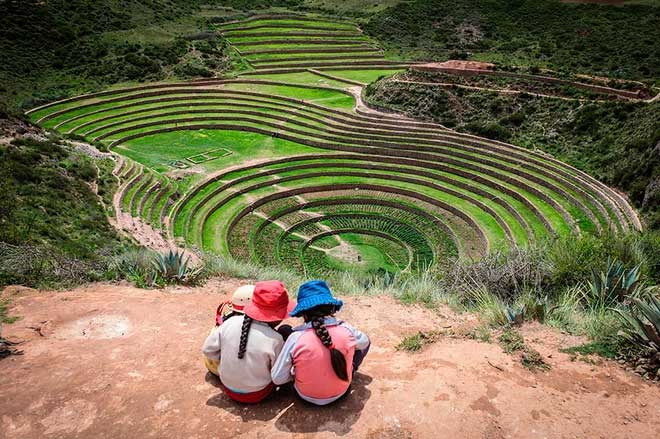
One of the most remarkable Inca ruins is located in Moray, an archaeological area in Peru, about 50 km northwest of Cuzco – this is essentially a sunken area on a plateau shaped like terraced fields. In a sunken area resembling a large bowl, a series of concentric terraces resembling an ancient Greek theater were constructed. The largest terraces are centrally located and are very large, with a depth of about 150 meters, leading to a round bottom for drainage to prevent flooding.
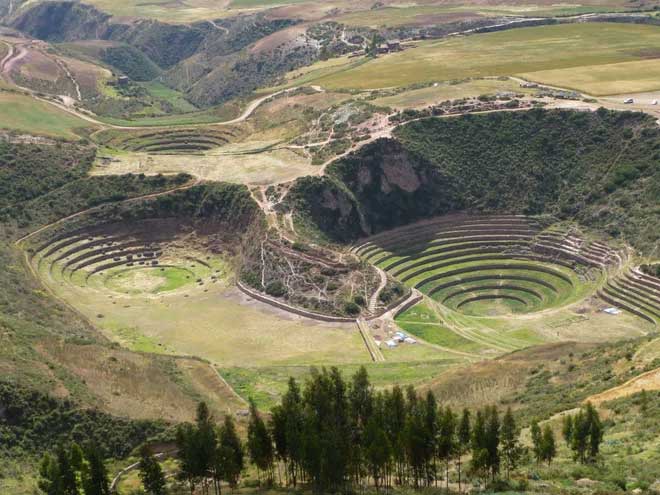
The concentric terraces are divided into a staircase pattern that extends upward, allowing people to walk from top to bottom. Six large terraces surround the center of Moray, resembling ellipses rather than a perfect circle, with 8 terraces enclosing a small part of the outer structure. The purpose of constructing these terraces remains unclear; however, many believe the Incas used it as an agricultural research station. Today, it is open as a tourist attraction. Moray’s opening hours are from 7 AM to 6 PM.

















































